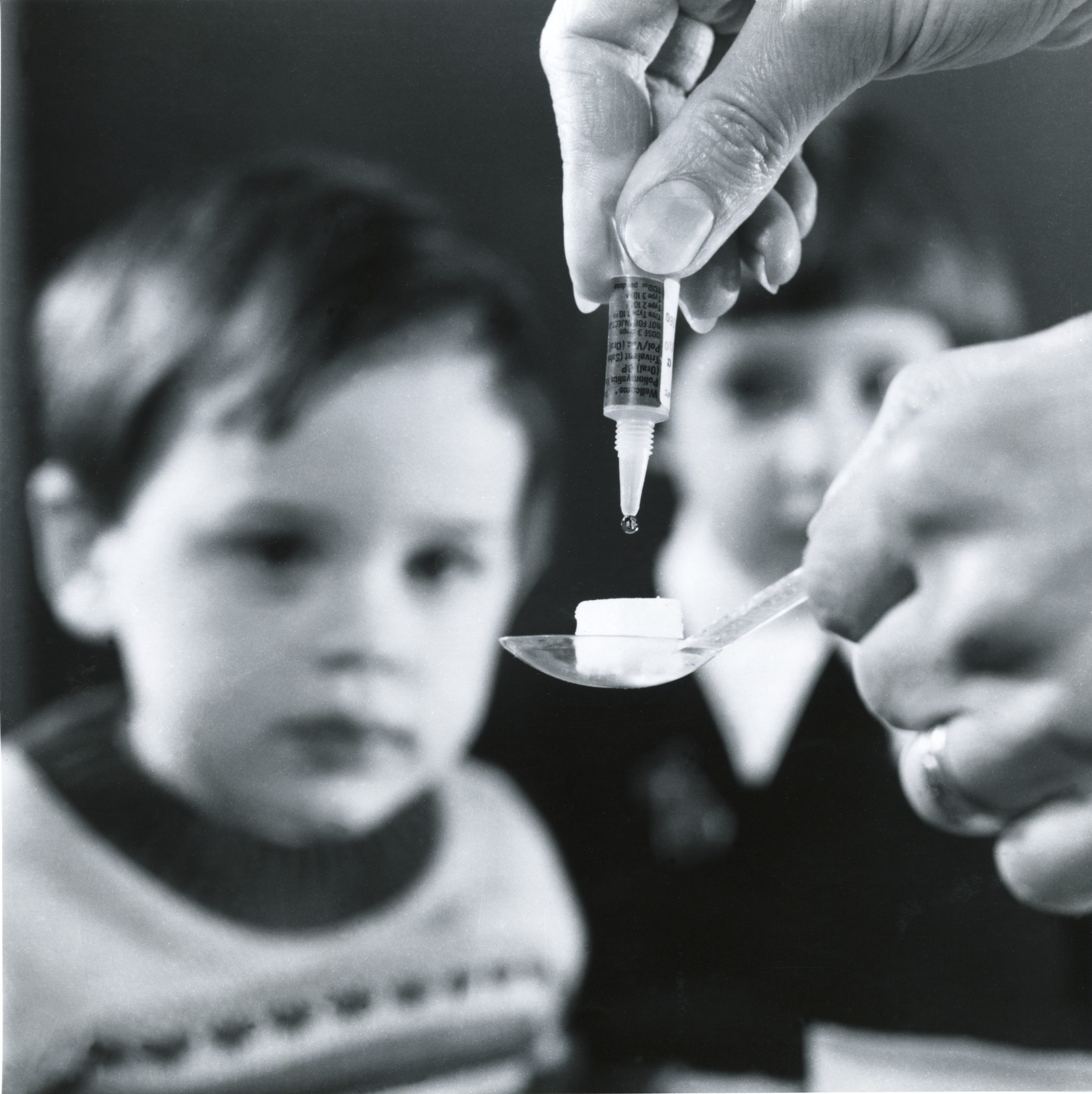Vaccine mediated polio infection
Jump to navigation
Jump to search
Editor-In-Chief: C. Michael Gibson, M.S., M.D. [1];Associate Editor(s)-in-Chief: Ahmed Younes M.B.B.CH [2]
Synonyms and keywords: Vaccine derived paralytic polio; Vaccine derived polio; Paralytic polio due to vaccination; Vaccine related polio infection; Vaccine associated polio; Vaccine related polio.
Overview
Oral polio vaccine (OPV) is one of the safest and most effective vaccines that prevents millions of cases of polio, not only through direct immunization, but also through herd immunity. On rare occasions, the vaccine is associated with paralytic polio. There are two subtypes of paralytic polio that are related to OPV, vaccine associated paralytic polio and vaccine derived paralytic polio.
Vaccine associated paralytic polio
- Vaccine associated paralytic polio (VAPP) occurs when the attenuated strain used in the vaccine reverts into more virulent form inside the intestine.[1][2][3]
- The more virulent form is capable of causing the disease only in the vaccinated child or any close susceptible contact. Therefore, no outbreaks are associated with VAPP.
- The prevalence of VAPP is 1 in every 2.7 million vaccine doses.
- In developed countries, the risk of VAPP is highest with the first dose; while in developing countries, it is increased with subsequent doses of vaccine.
Vaccine derived paralytic polio
- Vaccine derived paralytic polio (VDPP) is caused by a very rare mutation of the original strain of polio in the vaccine.[1][4]
- VDPP has the ability to cause the disease in any person who is not immune; therefore, it is able to cause outbreaks or even epidemics, especially in communities that do not have a routine vaccination program.
- When it causes outbreaks, VDPP is called circulating vaccine derived paralytic polio (cVDPP).
- In the last 10 years, 24 VDPP reported outbreaks occurred and unfortunately led to 750 cases of paralytic polio.
- Management of VDPP involves conducting extensive vaccination campaigns in the affected communities and aiming to vaccinate every child, thus preventing the spread of the infection.
References
- ↑ Jump up to: 1.0 1.1 "www.who.int" (PDF).
- ↑ Nkowane BM, Wassilak SG, Orenstein WA, Bart KJ, Schonberger LB, Hinman AR, Kew OM (1987). "Vaccine-associated paralytic poliomyelitis. United States: 1973 through 1984". JAMA. 257 (10): 1335–40. PMID 3029445.
- ↑ Sullivan AA, Boyle RS, Whitby RM (1995). "Vaccine-associated paralytic poliomyelitis". Med. J. Aust. 163 (8): 423–4. PMID 7476613.
- ↑ Khetsuriani N, Prevots DR, Quick L, Elder ME, Pallansch M, Kew O, Sutter RW (2003). "Persistence of vaccine-derived polioviruses among immunodeficient persons with vaccine-associated paralytic poliomyelitis". J. Infect. Dis. 188 (12): 1845–52. doi:10.1086/379791. PMID 14673763.
